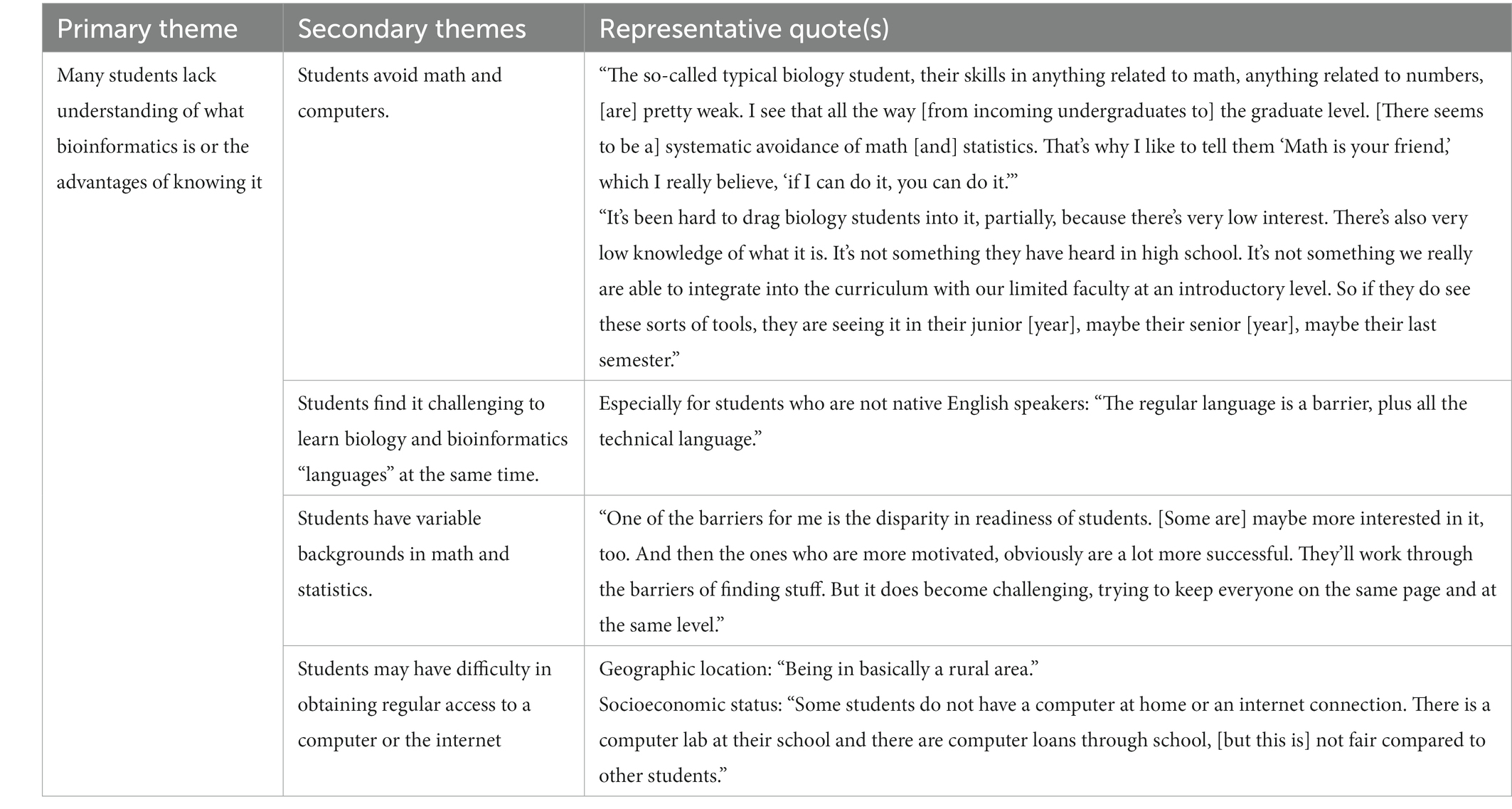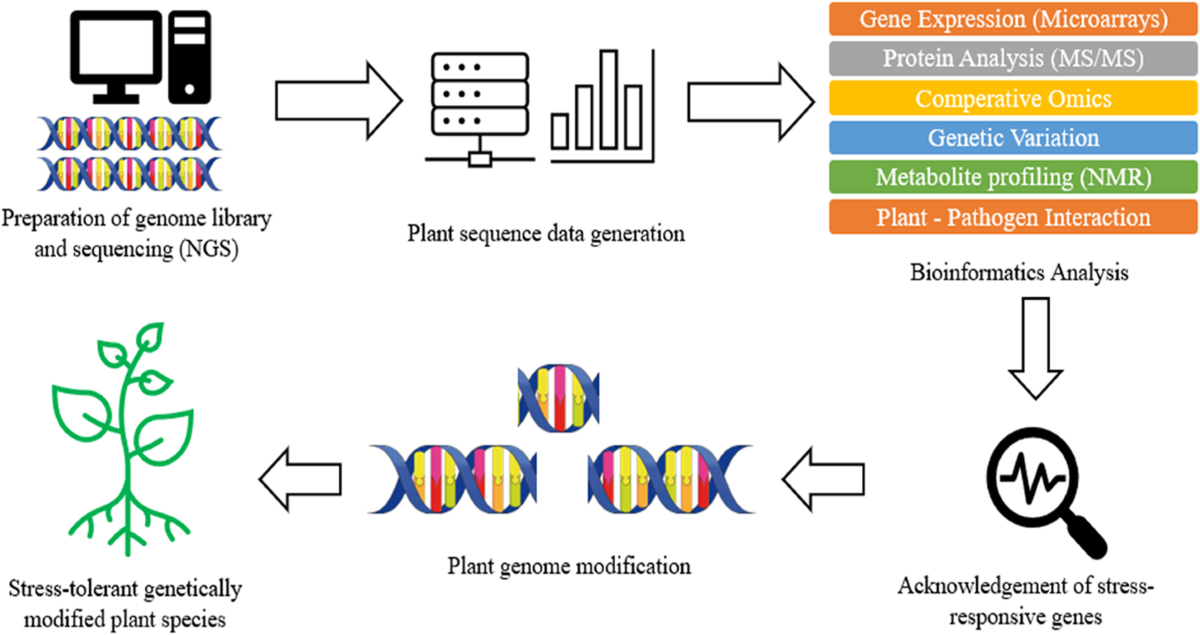Some Known Questions About Bioinformatics Tutor.
Some Known Questions About Bioinformatics Tutor.
Blog Article
A Biased View of Bioinformatics Tutor
Table of ContentsRumored Buzz on Bioinformatics TutorThe Bioinformatics Tutor StatementsThe Ultimate Guide To Bioinformatics TutorThe Definitive Guide for Bioinformatics TutorThe Greatest Guide To Bioinformatics Tutor
Of the total individuals included in the training, 80% were trainees from public college establishments, while the remaining 20% originated from private establishments. To receive a certification of involvement, students were needed to go to at least 90% of the complete training hours. As an outcome of this demand, a remarkable 95% of the individuals successfully obtained their certificates, having not just met the minimum attendance requirements however additionally completed all designated activities throughout the training.
Throughout the elevation of the COVID-19 pandemic, especially in between June and August 2020, the task group was entrusted with arranging specialized training in bioinformatics. This training was specifically targeted at students from the study team Core for Research in Applied Computing at the Federal College of Pará (UFRA) The adaptation to remote learning platforms because of the pandemic developed a possibility to explore brand-new mentor approaches and digital tools that improved both reach and effectiveness.
To react to the growing demand in the computing and life sciences fields, an advanced program was presented in 2020 entitled Introduction to Artificial intelligence. This course was designed to provide an easily accessible yet thorough introduction of Expert system techniques, especially as applied in bioinformatics. The program was performed over three months, from October to December 2020, and was delivered totally online with the Google Meet system. This virtual layout made it possible for engagement from students across Brazil, most of whom may not have had the opportunity to go to in-person sessions.
The Bioinformatics Tutor Diaries
Roughly 50% of the complete training hours were committed to practical tasks where trainees developed smart versions and applications in a variety of scientific domains, including genetics, molecular biology, and ecological data analysis. These systems allowed students to involve in real-time information control, model training, and algorithm trial and error.
Sixty of them were affiliated with numerous higher education organizations in the state of Pará, while the continuing to be twenty came from institutions found in 5 other Brazilian states. By introducing Artificial Knowledge in a practical and appropriate context, the effort served to link the void between concept and real-world application, giving trainees with a strong foundation for future study or employment in the field.
The training campaign formed part of a broader scholastic outreach initiative known as the Bioinformatics when traveling job. This project has, throughout the years, introduced loads of students to the globe of bioinformatics and computational biology. The occasions held under this umbrella campaign have occurred across multiple regions and years, as summarized in Table 1 (Listing of events, places, years, and overall varieties of trainees and instructors)
One of one of the most exceptional end results of the Bioinformatics when traveling effort has been its contribution to the growth of decentralized study groups. Several of these teams, at first combined by their involvement in training events, have actually given that gone on to generate independent scientific study in collaboration with regional scholastic establishments. The training not just promoted clinical reasoning within the context of bioinformatics however also sparked collaborative partnerships that prolonged past the training environment. These collaborations have actually brought about increased neighborhood scientific efficiency and added meaningfully to the development of the more comprehensive bioinformatics area in Brazil.
Some Ideas on Bioinformatics Tutor You Need To Know
The exact same team, excluding IH and RR, additionally acted as tutors for the sensible training modules. Financing for the project was given through the give 88887.200562/ 2018-00 from CAPES.
The Federal University of Pará's Office of Study (PROPESP/UFPA) likewise provided financial backing, specifically for the manufacturing of the final manuscript. The writers declare no financial or business conflicts of passion that might have influenced the research study. Additionally, all opinions and interpretations expressed in this post are solely those of the authors and do not always show those of their corresponding organizations, the publisher, editors, or reviewers entailed in the publication procedure.

The Bioinformatics Tutor PDFs
From an instructional perspective, the mentor strategy used in the training was deliberately interactive. Courses were performed in a manner that encouraged pupil participation and conversation, exceeding rote memorization to check out just how concepts are developed, used in day-to-day life, and tested in academic settings. The training approach concentrated on nurturing both strong and struggling students, offering individualized support, and building confidence through continual mentorship and perseverance.

Each team, containing around 36 individuals, was sustained by 3 mentors-- a lot of whom were postdoctoral researchers with specific experience. These mentors not only helped create the team tasks yet likewise facilitated their execution, guaranteeing that each research study inquiry was both relevant and appropriately tough. The goal was to provide a naturally reasonable context that participants might check out with open-ended goals and access to curated datasets.
For additional insights right into the methodology and end results of this project-based knowing approach, readers are guided check that to S1 Text, that includes comprehensive summaries of the pedagogical structure, evaluation techniques, and project motifs utilized in the training sessions.
Excitement About Bioinformatics Tutor
Of the total amount individuals included in the training, 80% were pupils from public greater education organizations, while the staying 20% came from personal establishments. To qualify for a certification of involvement, pupils were required to go to at the very least 90% of the overall training hours. Especially, beyond the trainees who enlisted in the training sessions, seven skilled trainers got involved in providing the programs, while three devoted research study teachers collaborated the total training procedure. Roughly 50% of the complete training hours were committed to useful tasks where students developed intelligent versions and applications in a variety of clinical domain names, consisting of genetics, molecular biology, and ecological information evaluation. The training not only promoted clinical reasoning within the context of bioinformatics yet additionally triggered collaborative relationships that extended beyond the training setting.
Report this page